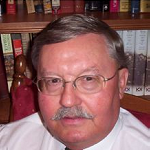Unfortunately this static type of definition – focusing on geography and government – makes it all too easy to ignore the dynamic aspects of a community that impact its resilience. In this post, I want to explore a few of these.
Perhaps the most important of these dynamic aspects of community – certainly the one most overlooked by researchers and practitioners alike – is that communities are open systems. A community’s population may be almost unchanging from one year to the next, but there is a roiling of the humanity hidden by the statistics. Old faces are continually disappearing; new voices are continually making themselves heard.
Though the forces driving this human churning vary widely there is one constant: self-interest – the glue that holds a community together. The members of a community belong to the community because they believe they benefit from being a part of it. The benefits may be financial, or social or simply an emotional sense of well-being. But individuals – and organizations – must believe they are benefiting from being a part of the community, else they are likely to leave when opportunity is presented.
For many of our communities, their open-ness is manifested in another way – they can only be understood in their regional context. Certainly geography and governmental forms are a part of that context, but only a part. Mega-cities like New York City; smaller cultural centers like Charleston, SC; regional economic hubs like Tupelo, MS; all rely on their region for their vitality. Whether it’s bedroom communities supplying the workforce powering a city’s productivity; residents of surrounding towns helping the arts, entertainment and recreation scene to flourish; or residents of rural areas being the mainstays of a town’s small businesses; communities are shaped by – even as they shape – their regions.
This regional context also means that membership in the community is a fuzzy concept. Isn’t the professor at USF who commutes across the Bay Bridge every day a part of the San Francisco community? How about those from White Plains who come into the city to see the shows? Or those who live scores of miles from their county seats who shop at the WalMarts there? All are contributing to the community; none would be counted in its population.
We shouldn’t ignore negative examples that reinforce the importance of a community’s regional context either. The failure of the surrounding suburban communities to provide support played important roles in the declines of Detroit, Flint and other Rust Belt cities. Could they have prevented the declines – unlikely. But they could have softened the landings.
Thus, when we think about the resilience of our communities we need to think of them as open systems held together by self-interest. We need to ask ourselves questions like “Why are people moving here?” “Where do our workers live?” “Who shops in our stores?” “What makes this community unique?” Finding answers to these questions can be an important step in becoming more resilient. Because ultimately our communities are not just colored polygons on a map – they are individuals, families, neighborhoods, businesses and other organizations bound together by perceived self-interest as well as geography. Unless we recognize the humanity underlying the maps, the statistics and the legal forms, our efforts to become more resilient will always be stunted.
PS. – For those of you who are looking for a Christmas present for a friend who is a reader, let me suggest Arlie Hochschild’s Strangers in Their Own Land. She is a very liberal sociologist from UC-Berkeley (I think there is a redundancy in there!) who had the temerity to go to live in Louisiana and – as she says – “turn off her alarms.” She tried to understand why people in this extremely poor state were still so very conservative. She didn’t preach, she listened. What she heard was the deep story of their beliefs which she summed up as
“You are patiently standing in the middle of a long line stretching toward the horizon, where the American Dream awaits. But as you wait, you see people cutting in line ahead of you. Many of these line-cutters are black—beneficiaries of affirmative action or welfare. Some are career-driven women pushing into jobs they never had before. Then you see immigrants, Mexicans, Somalis, the Syrian refugees yet to come. As you wait in this unmoving line, you’re being asked to feel sorry for them all. You have a good heart. But who is deciding who you should feel compassion for? Then you see President Barack Hussein Obama waving the line-cutters forward. He’s on their side. In fact, isn’t he a line-cutter too? How did this fatherless black guy pay for Harvard? As you wait your turn, Obama is using the money in your pocket to help the line-cutters. He and his liberal backers have removed the shame from taking. The government has become an instrument for redistributing your money to the undeserving. It’s not your government anymore; it’s theirs.”
It is probably the most accurate explanation of why so many of the working poor and the rest of the middle class did not vote Democratic; in fact, in a more universal form, it goes far toward explaining the new populism throughout the Western world.
Reposted with permission via: Community and Regional Resilience Institute

 “What should we do now?” “What should we say?”
“What should we do now?” “What should we say?”